What is a radish and how to grow it?

It can be important for gardeners to know what a radish is, how it looks and what family it belongs to. It is worth understanding the features of the white radish, pink radish, other species and varieties, with how to grow it. A separate topical topic is the planting of radish seeds, as well as a description of the fruits of this plant.
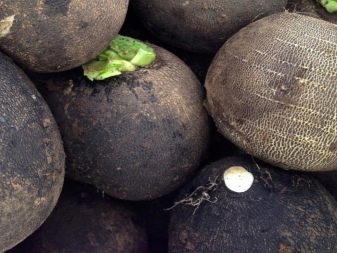
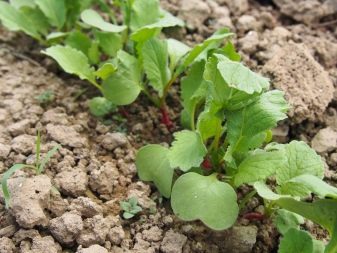
general description
Radish is one of the oldest crops that have found application in gardening practice in different countries. It is known that already in the 10th century AD it was grown both in South-West Asia and in the Mediterranean regions. It has been established that the radish has both annual and biennial forms. Basically, with rare exceptions, the vegetable is one of the elongated root crops that visually resemble a spindle or cylinder. Stems can be either simple or branched.
The genus radish belongs to the cabbage family, they are cruciferous. In terms of taxonomy, this culture is close to:
- ordinary cabbage;
- radish;
- levkoy;
- shepherd's bag;
- mustard.
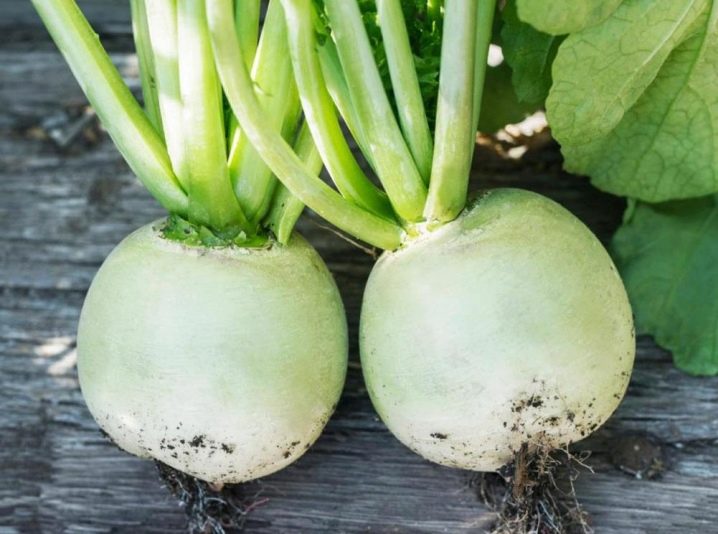
Radish leaves have a pinnate or pinnately dissected structure. And also the outlines of such an instrument as a lyre are guessed in it. Straight elongated sepals have an obtuse geometric shape. The petals look like a wide inverse oval, often compared to an elongated marigold. They are colored in:
- White;
- yellow;
- purple-violet tones.
The ovaries are formed on extremely short stalks. The column is not clear. Bilobed in stigmas is characteristic, but it is very weak. It is worth noting that from a botanical point of view, the fruit of a radish is not a root vegetable, but a cylindrical pod ending in an elongated spout. Seeds are a cross between an egg and a simple ball.
The homeland of the radish is Asian countries. Archaeological research suggests that it was the earliest to be cultivated in the Mediterranean. The usual root system of a garden crop is of the rod type and is highly branched.
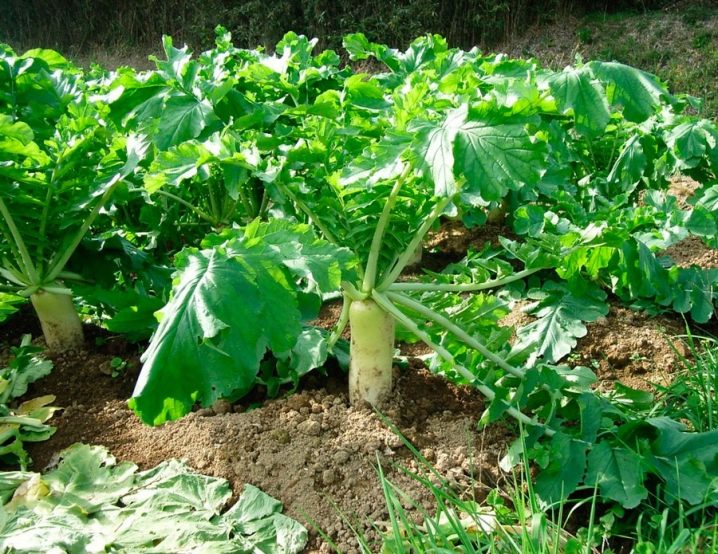
The structure of the flower is also very interesting. It is divided into 4 petals. The edges of these petals are slightly rounded. The flowers themselves are usually yellow or white. There are pink, lilac, and in rare cases purple specimens. The cross-section of the flower is 1.8 to 4 cm across. Flowers will be located in loose, oblong clusters at the edges of herbaceous branches. Radish bloom usually occurs in early summer.
The type of leaf arrangement is very interesting. In wild radish, foliage is arranged according to the next scheme. Its leaves themselves are lyre-pinnate. The apical lobe is invariably large. There are 4 to 6 non-toothed lobes. The formation of racemose inflorescences is characteristic.
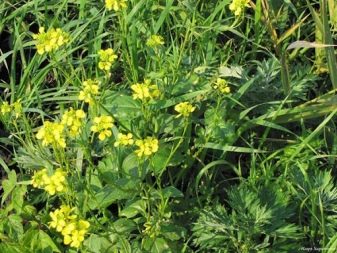
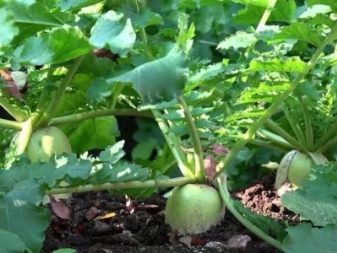
In the morphological description of the radish, it is important that its vertically growing stem grows up to 0.5 m. The stems themselves are rounded, but they also have some resemblance to the lancet. Almost all specimens have several branches extending from the main stem, but sometimes it may not branch out. The root does not branch, reaches a relatively short length, and at a young age is represented by a basal rosette.
Only after the formation of this rosette will the stem be pulled out. The wild species blooms at the very end of spring or in the first decade of June. He produces flowers with a cross section of about 2.5 cm. In other species of this genus, the external appearance of the flower is significantly different, which is an important distinguishing feature.The life form of all, in general, is radish - herbaceous biennial or annual.
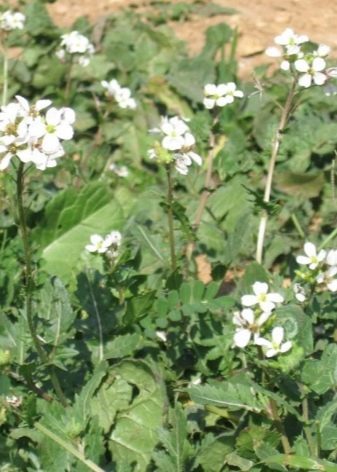
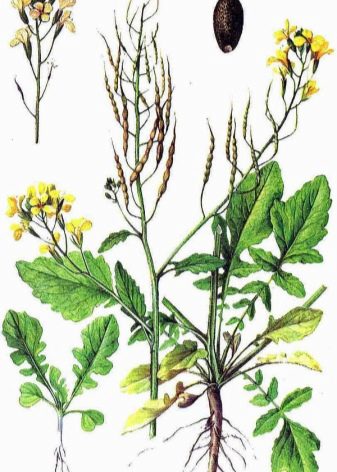
Types and varieties
White radish plays an important role in the daily practice of gardeners. It is actively used both in the culinary and in the medical field, which increases the relevance of its cultivation. White radish can be both annual and biennial crops. Its long subspecies is better known as daikon. Root crops reach a length of 0.6 m.
This is a completely unpretentious plant. A pleasant sweet taste is noted. Productivity is 2.5-3 kg. Vegetation takes up to 60 days. In the daikon rosette, 12 to 40 leaves appear with a strong dissection.
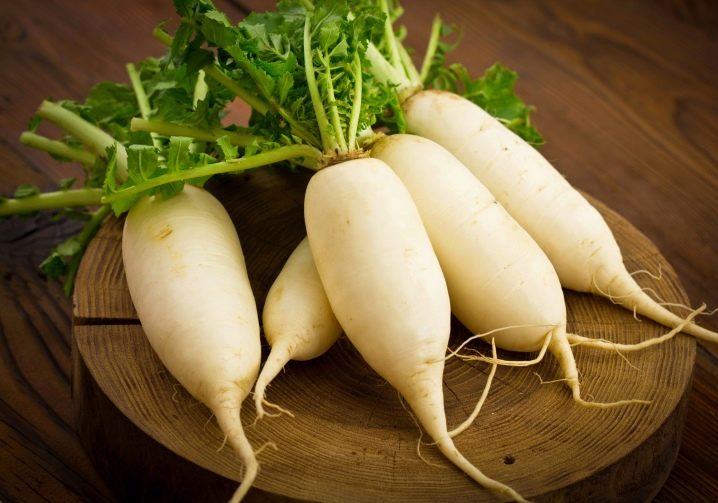
Minovashi type Is a mid-season radish. Its flesh crunches well. The fruits can be stored for a long time. In shape, they resemble a cylinder elongated in length. In hot and dry weather conditions, the culture develops quite effectively. Between crops and full ripeness, an average of 65 to 70 days will pass.
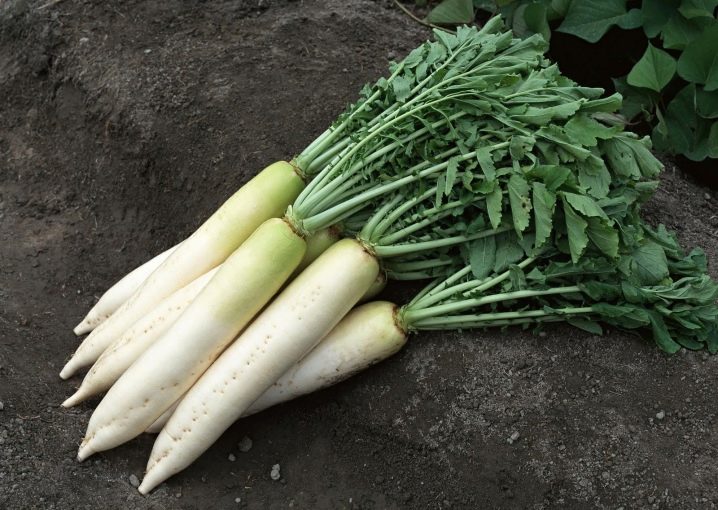
Daikon Dubinushka suitable for cultivation in open and protected ground. From 60 to 75 days pass between sowing and technical maturity. The root crop weighs from 0.75 to 2.2 kg. Marketable yield is from 500 to 750 centners per 1 ha.
The taste characteristics of this variety are very high.

Daikon Emperor Is a typical first generation hybrid. A mid-season crop forms a semi-erect deciduous rosette. In this case, 2/3 of the root crops are normally located underground. The official description insists on the immunity of this variety to damage by keel and flowering. Individual root vegetables of the Emperor can weigh from 0.58 to 0.61 kg. The collection from 1 m2 is usually 4.2-4.4 kg.
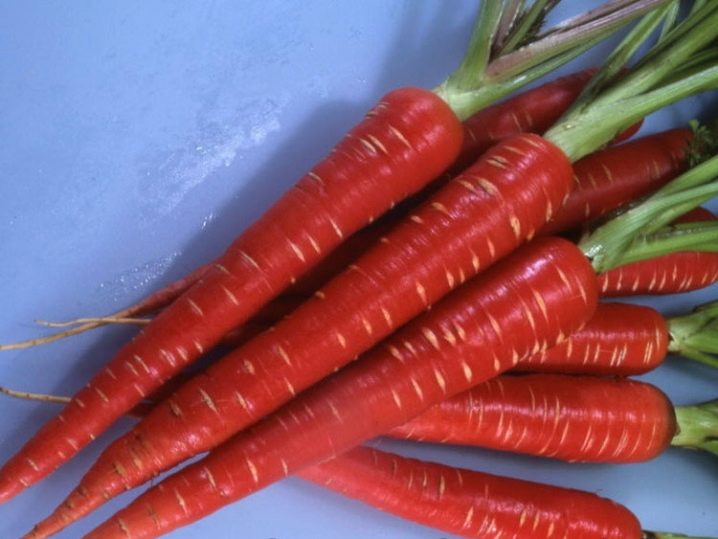
Sowing or garden radish - no less significant culture than the daikon. It has a one-year or two-year development cycle by default. The typical height is up to 0.9 m. What is usually called "radish" or "radish", in fact - annual forms of sowing radish. With this option, medium-sized white or red roots are formed.
Sown radish in the narrow sense gives black large roots. Their bitter taste is much richer. The root has a petiole structure. Seedlings develop optimally at + 20 ... 25 degrees.
It must be remembered that in any case, this species refers to plants with long daylight hours.
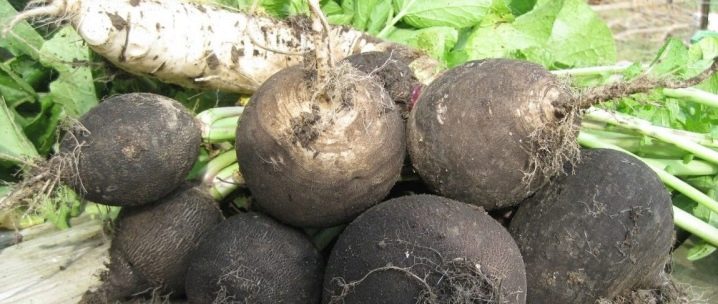
Among the best types of crops for the garden, pink radish deservedly appears. The mass of its root crops is 0.25-0.34 kg. It got its name for the color of the core of the root crop. The exact origin of the variety is unknown, although hybridization has been suggested.
In any case, such a plant is unpretentious and gives a tasty harvest, its pulp is invariably juicy and dense.
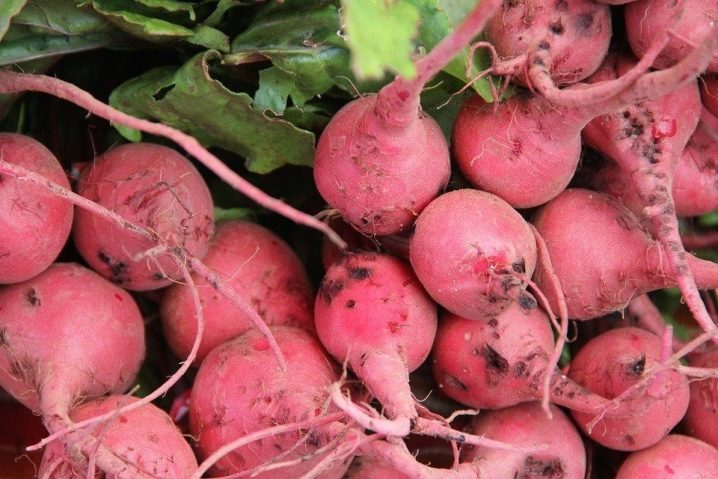
The yellow radish is primarily the Zlata variety. Ripeness is reached approximately 20 days after germination. Root crops have an expressive spherical shape. They contain delicate and extremely juicy pulp inside. On average, the mass of a single fruit is 23 g.
In addition to the non-standard coloration, Zlata has a decent fertility. The roots are always aligned. Their presentation is always decent.
This crop grows best on light, moist soil. Seed germination is possible even at low temperatures.
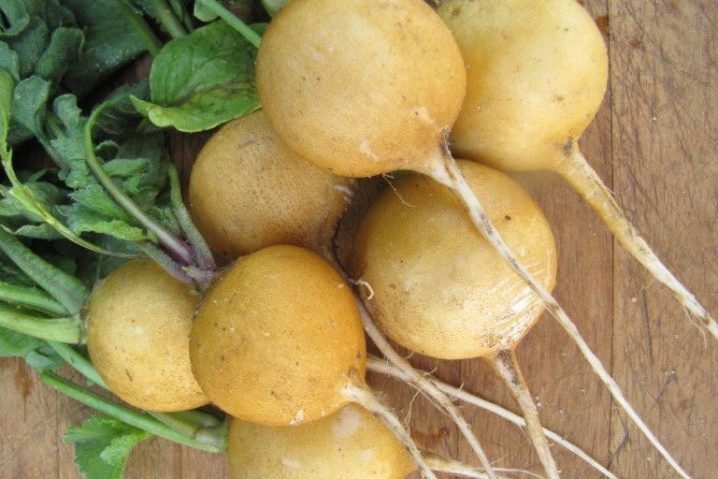
This vegetable sometimes also has a purple color. It usually only touches the peel, but inside the pulp invariably has a snow-white tone. The shape of the root crop is round or oval, its skin is always even. Watermelon radish can also be called purple radish, with a greenish note mixed with the white color of the peel.
This rind is noticeably hard. Under it is a rich raspberry pulp. The taste of this variety is slightly spicy, the vegetable weighs 0.1-0.2 kg. Root crops ripen relatively early, in just 60-70 days. But they cannot be stored for a long time for technical reasons.
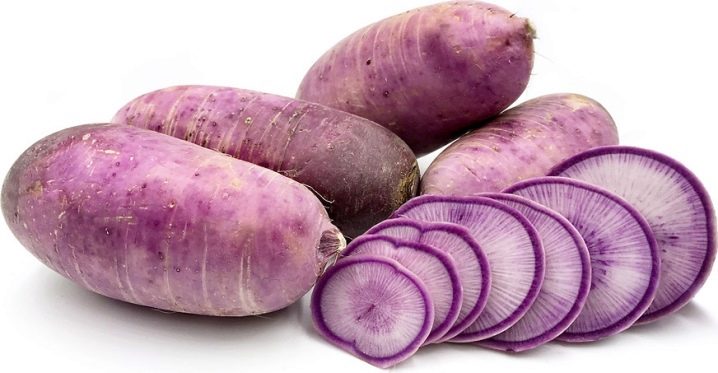
Moving on to the black radish, you should definitely consider the Murzilka variety. It ripens in 90-100 days but is very good in winter.The section of root crops is from 8 to 10 cm. Their mass will be equal to 0.21-0.3 kg. Under normal conditions, preservation until spring is guaranteed.
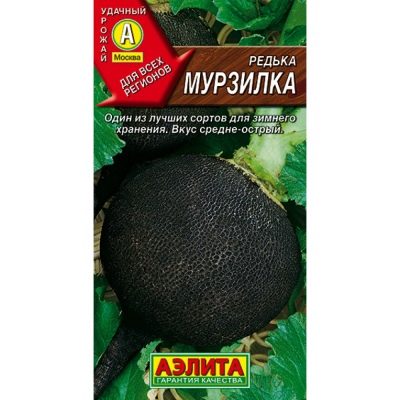
Mid-season variety Nochka suitable for both private and industrial cultivation. Its roots are round and even. The color is always very rich. There is a slight spicy note in the taste.
It is not difficult to save and transport the crop.
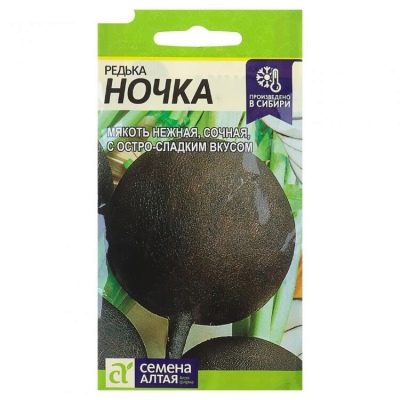
The Queen of Spades, like Murzilka, is good for winter use. Its roots are shaped like a pointed cylinder. They weigh between 0.35 and 0.5 kg. Light flesh is hidden under the dense black skin. Productivity reaches 6 kg per 1 m2.


Radish Grayvoronskaya - an old variety with a late ripening period. Such a crop is grown in loose soil. It needs a deep arable layer. An expressive pungency of taste is noted. It is not difficult to save the harvest of this variety until spring.
Uzbek radish is not a plant, but one of the recipes.
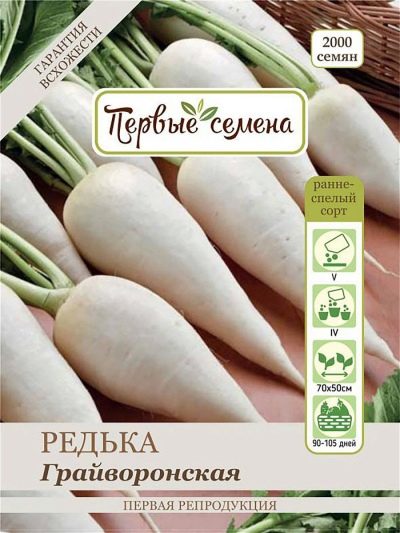
Landing
It is possible to sow seeds of early small-fruited varieties already in April or even in March, provided the weather is favorable. But this is done only in the south of Russia, and in the middle zone and to the north, you will have to do differently. Early ripening radish is planted at the junction of April and May. Late varieties must be planted in the first half of July. It is recommended that you choose areas that receive the sun as long as possible during the day.
Better to use ridges of fertile sandy loam or loam. It is most often light humus with an acidity of 6 to 7 on the pH scale. Before planting, the soil is dug to a depth of 0.2-0.25 m.There it is worth adding 20 kg of high-quality compost mixed with wood ash. After the addition, the mass is mixed and leveled.
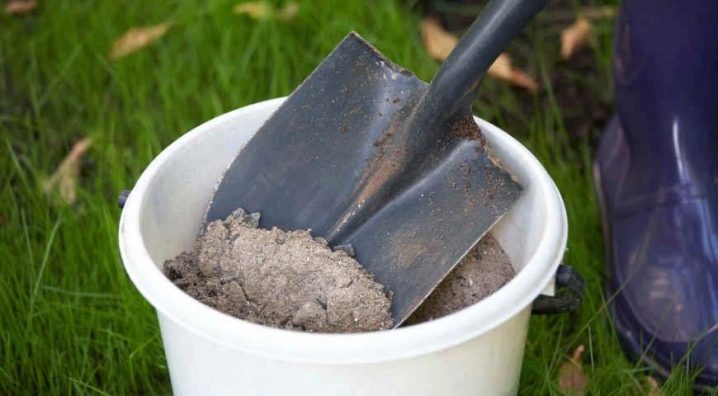
The seeds should be deepened by 1.5-2 cm. The row spacing should be 20-40 cm. The gaps between the holes are 10-15 cm. If it is necessary to maximize productivity, the sowing density is increased. Then the weak seedlings are thinned out.
Radishes can be planted next to onions and potatoes. Tomatoes and even corn are also good companions for her. Pre-soaking in unsaturated permanganate solution is encouraged, although not required. The soil above the seeds is slightly compacted, then watered abundantly. To prevent insect damage, plantings are immediately powdered with ash or tobacco crushed into dust.
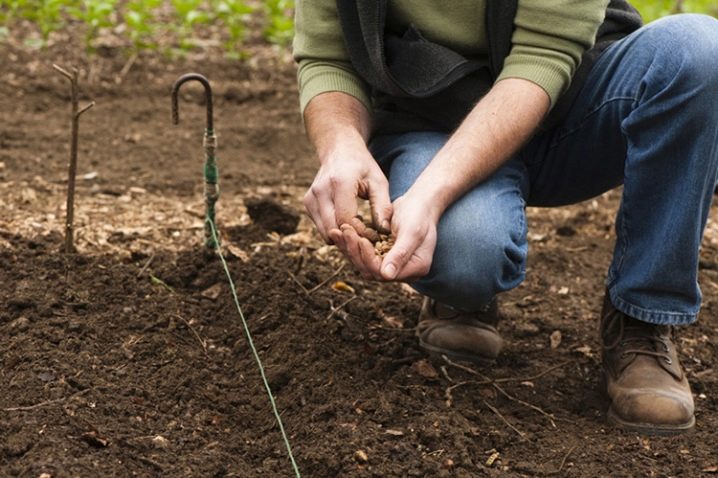
Care
- Watering. Irrigation of the radish should be done regularly and systematically. For 1 sq. m use at least 10 liters of water. Plants planted in spring are watered every 6-7 days. But if you plan to use the crop for sowing in the future, it is enough to limit yourself to 3-4 waterings per growing season. More often, this procedure is only carried out when the weather is too hot.
- Top dressing. Fertilization should be planned taking into account the timing of ripening. Early varieties can be fed twice. Both at the time of unrolling the second sheet, and a week after that, only nitrogen mixtures should be used.
Late varieties need to be fed with complex formulations on a weekly basis. Fertilizers are placed weekly.

Diseases and pests
White rust can appear if the temperature is about 15 degrees, or is sharply unstable. It is more likely if it rains frequently, if fog and dew begins. To combat this disease, use "Ridomil-Gold" or "Folikur". In simple cases, colloidal sulfur diluted in water or a solution of permanganate is used. On hot days, beware of powdery mildew. Threats are also posed by peronospora, keela, various types of rot and bacteriosis.
Radish can be attacked by:
- cruciferous flea;
- cabbage fly;
- white butterfly (or rather, its caterpillars);
- cruciferous bugs;
- cabbage moths;
- rape flower beetles.
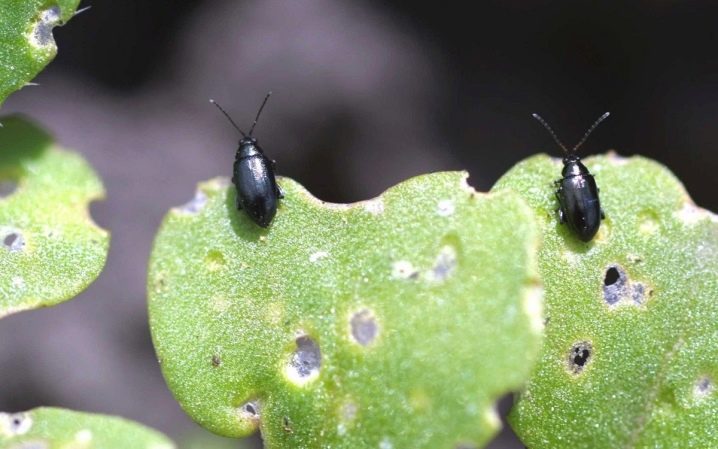
Harvesting and storage of crops
The radish is harvested in summer or autumn. The specific period is determined by the moment at which the crop was planted, and how they are going to use it. In the Moscow region, you can postpone the collection of root crops until the beginning of November. In the Urals, harvesting should be completed by October 10, maximum. And in Siberia and the Far East, it is better not to postpone work later than September 25.
Long-term storage is possible only when selecting medium-sized root crops. Skins with scratches and grooves are not allowed. All wormy and rotting specimens are immediately thrown away. The radish is stored indoors at a temperature of at least zero degrees. Humidity over 85% should also be avoided.
Harvested root vegetables should not be stored next to fruit. But carrots and potatoes will be great companions. Crop inspection should be done every 2 or 3 weeks. If any problems arise, the fruits are disposed of immediately.
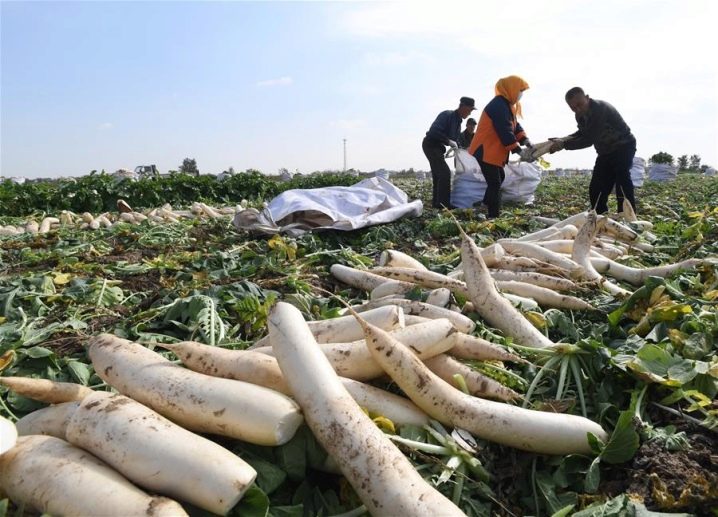
The crops can be stored in cellars and basements. There, all vents are covered with nets to prevent rodent eating. Fungi and other harmful microorganisms are defeated by disinfection. The room must have dry walls, the requirements for dryness also apply to the container used. But excessive drying of the air is unacceptable. Often, because of it, you even have to arrange buckets of water.
Storing radish on an open balcony is not possible. Only loggias are suitable, where conditions are monitored throughout the year. Old blankets and other similar pieces of fabric can be used to protect against overcooling. Do not store root crops uncleaned from the ground.
Under strict observance of normal conditions, they can lie without loss of properties for up to 9 months.
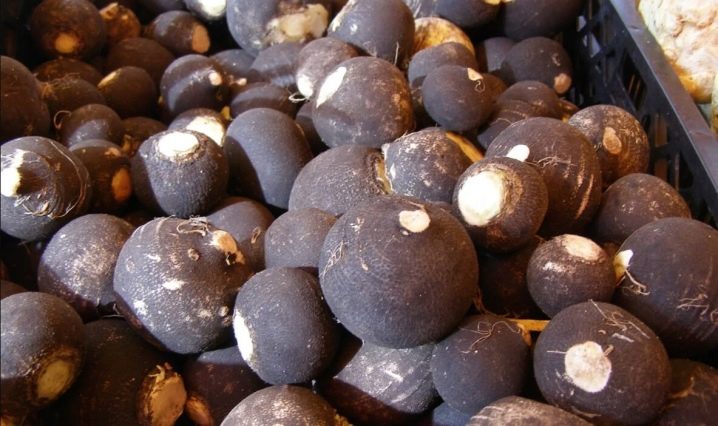
Interesting Facts
Radish was already highly appreciated by the ancient Egyptians. In ancient times, her culinary authority was also very great: the serving of such a product was carried out strictly on gold dishes. Although in Russia this plant is prized for its roots, in other culinary traditions, the use of young leaves may be practiced. Close botanical relatives of radish are broccoli and cauliflower. Root vegetables can be eaten stewed or boiled.
In the wild, the radish is found in the temperate regions of Asia and Europe. And also, already in the form of an agricultural crop, it is known in African countries and in North America. Sowing, or garden, radish in the wild is unknown. This product has an extremely low energy value, which makes it very popular for weight loss. The very name of the vegetable goes back to the Greek word meaning "rises quickly."
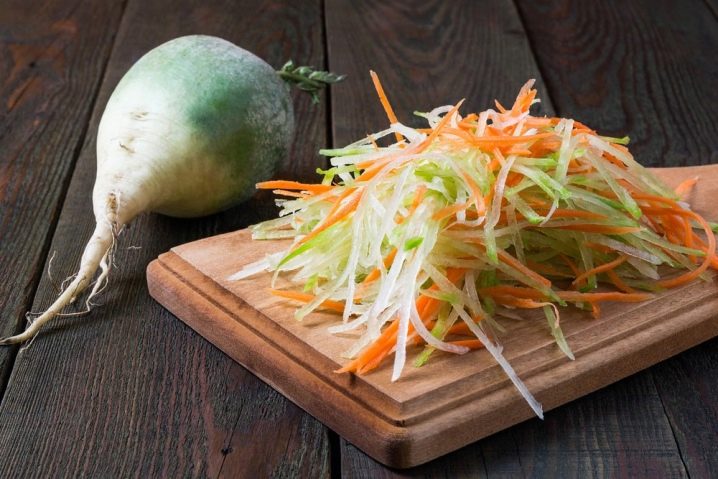













The comment was sent successfully.